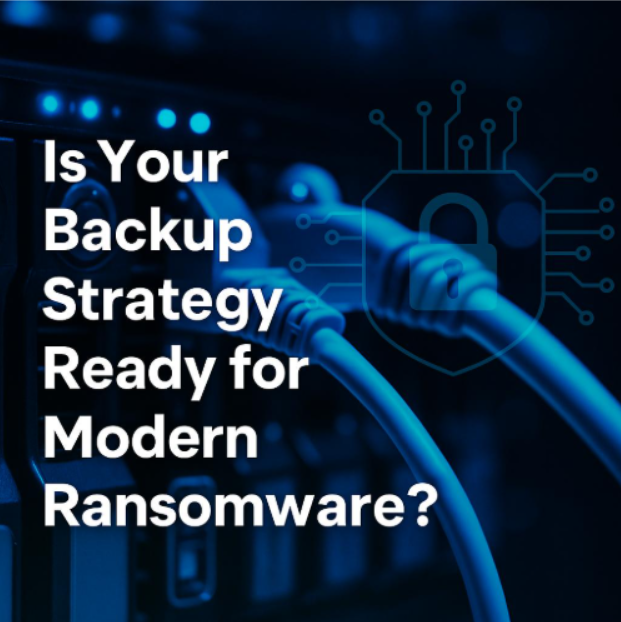
Ransomware attacks are becoming more sophisticated every year—and today’s cybercriminals aren’t just targeting your live systems. They’re going after your backups, too.
For small and mid-sized businesses, this is a game-changer. Simply having a backup is no longer enough to ensure a clean recovery. If your strategy hasn’t evolved to meet modern threats, your organization could be at serious risk. In this article, we’ll explore how ransomware is changing, why backups are being targeted, and what you can do now to make sure your recovery plan is truly resilient.
In the past, a solid backup strategy meant performing regular backups—daily or weekly—and storing them offsite or in the cloud. The idea was simple: if your systems were compromised, you could wipe everything and restore from backup. However, with the emergence of increasingly sophisticated cyber threats, such as zeroday vulnerabilities in security solutions, this traditional approach is no longer sufficient. Organizations must now adopt a more proactive stance, integrating real-time monitoring and threat detection into their backup strategies. Additionally, implementing advanced encryption and access controls can further safeguard backups from unauthorized access or tampering.
Unfortunately, attackers have figured this out. New ransomware variants are specifically designed to:
This means that by the time a business realizes they’ve been hit, their backups are either encrypted, deleted, or already infected—rendering them useless.
Cybercriminals today are playing a long game. Instead of locking down your files immediately, modern ransomware can sit undetected for weeks or even months. During this time, it can:
By the time the ransomware triggers, the damage is already done—and your backup data may be part of the compromise.
To protect your business, it’s time to rethink your approach. A ransomware-resilient backup strategy should include these critical components:
Immutable backups cannot be altered or deleted—even by administrators. Cloud providers like AWS and Microsoft Azure now offer immutability options to protect against malicious changes. This ensures that even if your credentials are stolen, attackers can’t destroy your backup copies.
This updated version of the traditional 3-2-1 rule advises:
By having one copy completely isolated from your production environment (air-gapped or immutable), you reduce the chance of simultaneous compromise.
Keep your backup systems separate from your production environment. Use different credentials, limit access, and apply strict firewall rules. This prevents ransomware from moving laterally and reaching backup storage.
Automated monitoring tools can detect signs of trouble, like sudden backup deletions or repeated failed attempts to access backup systems. Early detection gives you a better chance to respond before it’s too late.
Many companies back up their data but never test their recovery process. This is a mistake. Simulate restore scenarios on a regular schedule to ensure your backups are actually functional—and recoverable under pressure. Establishing a routine for testing your recovery process not only validates your backups but also builds confidence among your team. Furthermore, these insights can help refine your overall approach as you discover potential weaknesses in your data backup strategies explained. Regular testing ensures that when the unexpected occurs, you can quickly restore your data with minimal disruption.
Backups are a critical part of your cybersecurity strategy, but they’re not a silver bullet. A truly resilient business also needs:
By layering your defenses and securing your backup strategy, you create a stronger shield against modern ransomware threats.
Ransomware isn’t going away—in fact, it’s getting more dangerous and more targeted. That’s why your backup strategy needs to evolve beyond simple file copies. By adopting immutability, isolation, and consistent testing, your business can ensure you have a clean, safe recovery path—no matter how advanced the attack.
Your backups are your last line of defense. Make sure they’re ready.